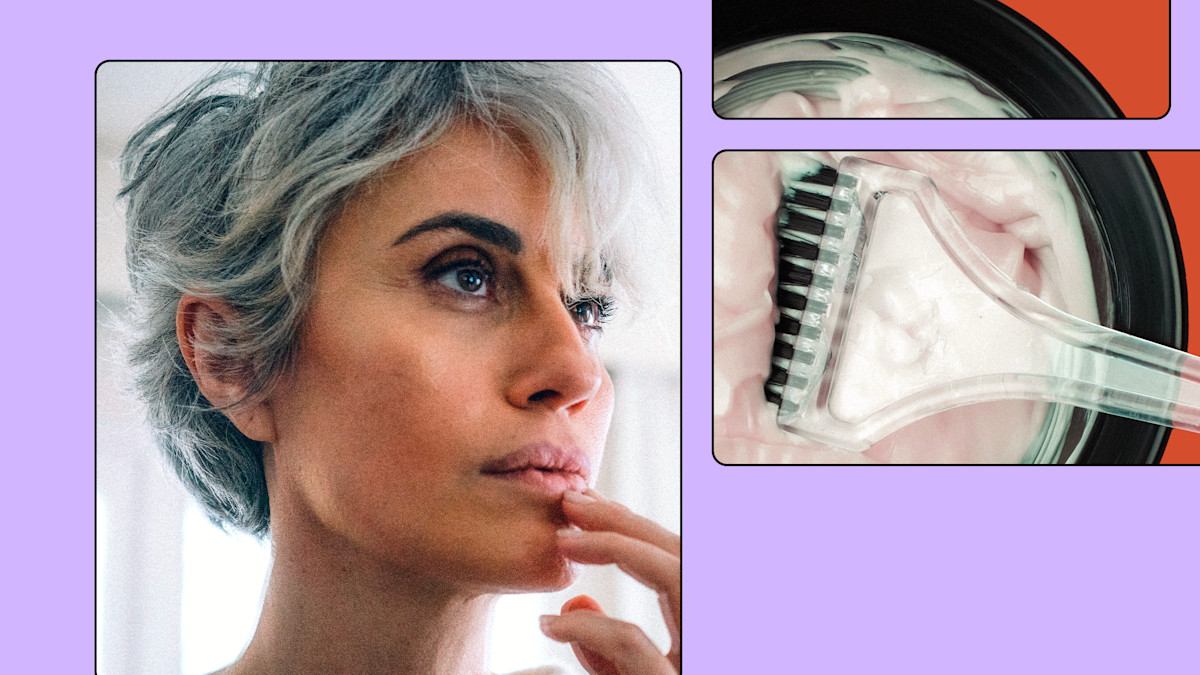Lifestyle
I’m 54 and tired of dyeing my hair. What’s the best way to go gray?

Dear Face Time, I’m 54 and I’m looking for advice on growing out my gray hair. I currently have a dyed-brunette, shoulder-length cut and I’m tired of heading to the salon every three weeks (my hair grows really fast), which is not only expensive but also time-consuming. Plus, I’m starting to feel like my dark color, which used to look normal against my skin, is starting to look fake, almost like I’m wearing a wig. I think I’m ready to go gray, but I’m afraid that it will make me look “old.” I also have an in-person office job, so I can’t really afford to look unkempt or awkward during the growing-out period, which I honestly dread. How do I transition out of dyeing my hair? What’s the best way to go gray? Am I crazy to even consider it? — To Gray or Not to Gray
Dear To Gray or Not to Gray, After a certain age, this really is the question, isn’t it? I have yet to speak to a woman post-45 who hasn’t grappled with this decision. It’s one that’s deceptively personal and intense, more about identity and self-acceptance than surface beauty and vanity (though vanity, of course, plays a part too!). More than 70% of women in the U.S. dye their hair — at some point or another, most of us will have to make the call on whether or not to stop.
The good news is, if you decide to go gray, the transformation will likely not happen overnight, which will give you time to adjust. Sure, there are celebrity stylists (like renowned colorist Jack Martin) who, for some serious coin (upwards of $10,000) and time investment (an average of 8 hours), will make you “gray in a day.” But for most of us, the grand silvering is a gradual process that reveals itself over months or, depending on your hair length, even years.
Having newly gray hair is an adjustment, yes. But like so much of life, successful aging is all about accepting and — if you’re lucky — embracing change.
Getting technical for a second, there are multiple effective methods for going gray, but from your letter I suspect you aren’t looking for something as extreme as shaving your head (the most punk option!) or even just going cold turkey by never dyeing again — and dealing with dramatically two-toned hair plus an obvious demarcation line for quite some time.
Considering that our hair grows about an inch a month, you could cut yours shorter, like in a pixie style, which will make the graying process move faster. However, if you’re willing to spend a little more at the salon, I suggest you consult with an experienced local stylist and plot out the best way, through a mix of highlights, lowlights, balayage (essentially hair painting with lighter dye) and gray blending, to ease into your silver strands over the course of the next year.
In terms of looking old, I imagine this is one of those situations — like the start of a roller coaster ride — where the anticipation is worse than the reality. Most women I know who’ve gone gray say it made them feel liberated, more confident and even richer! The fact is, none of this is permanent. If you don’t like it, you can always reverse course.
Having newly gray hair is an adjustment, yes. But like so much of life, successful aging is all about accepting and — ultimately, if you’re lucky — embracing change.
What’s the best makeup for wrinkles? Does retinol work? Ask Jennifer Romolini anything, as the kids say, and she’ll answer with straightforward, expert-backed advice. Submit questions in the comments below, on social @yahoolife or email askfacetime@yahoo.com.
